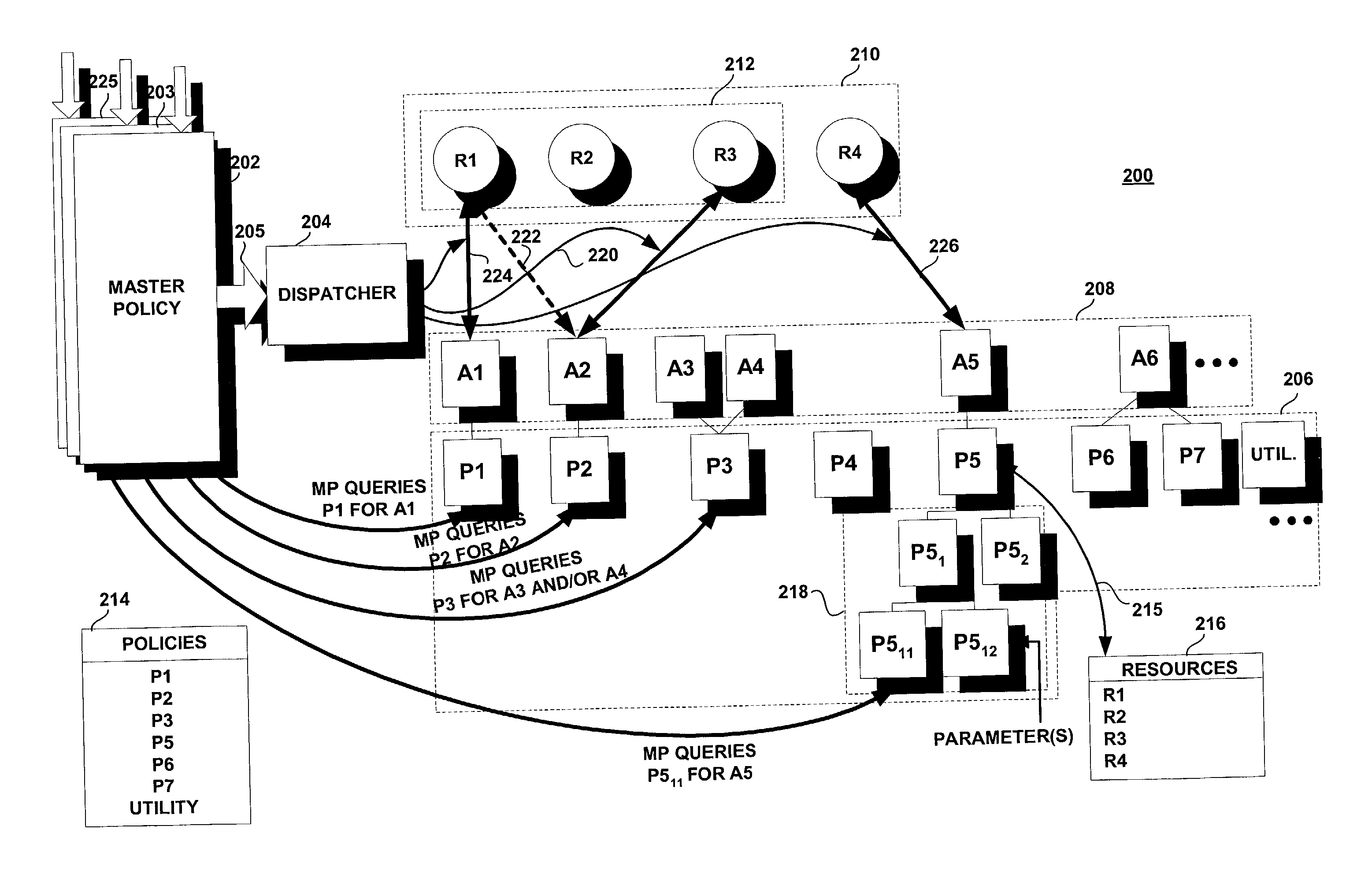Methods and systems for multi-policy resource scheduling
a resource scheduling and policy technology, applied in the field of dynamic allocation of resources, can solve the problems of inability to meet resource needs in an optimal manner, difficult or perhaps impossible to devise a single scheduling policy, and modifying parameters or partitioning processes/resources does not allow for on-the-fly creation of new resource scheduling policies
- Summary
- Abstract
- Description
- Claims
- Application Information
AI Technical Summary
Problems solved by technology
Method used
Image
Examples
Embodiment Construction
[0021] FIG. 2 is a diagram showing a computer system 200 configured to schedule and allocate resources to applications and / or processes, according to the present invention. As shown therein, the computer system 200 of the present invention may include and / or have access to a plurality of resources 210, such as R1, R2, R3 and R4. Such resources may include anything that is of limited supply, such as a data structure, a block of shared memory, storage space, an input / output (I / O) port and the like. The system 200 may also be configured to execute a plurality of processes 208 (such as individual applications, processes, JAVA servlets, for example), referenced in FIG. 2 as A1, A2, A3, A4, A5 and A6.
[0022] Instead of a single integrated resource allocation, scheduling and dispatching policy module as shown at 102 in FIG. 1, the present invention envisages exporting the resource allocation decision making into the applications realm, so that each application or proce...
PUM
 Login to View More
Login to View More Abstract
Description
Claims
Application Information
 Login to View More
Login to View More - R&D
- Intellectual Property
- Life Sciences
- Materials
- Tech Scout
- Unparalleled Data Quality
- Higher Quality Content
- 60% Fewer Hallucinations
Browse by: Latest US Patents, China's latest patents, Technical Efficacy Thesaurus, Application Domain, Technology Topic, Popular Technical Reports.
© 2025 PatSnap. All rights reserved.Legal|Privacy policy|Modern Slavery Act Transparency Statement|Sitemap|About US| Contact US: help@patsnap.com



